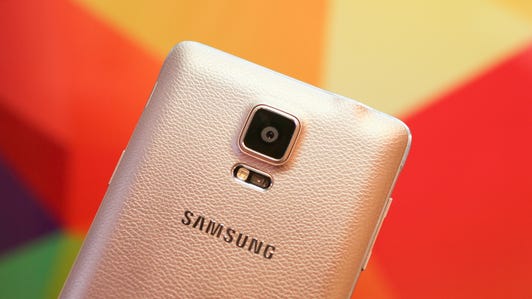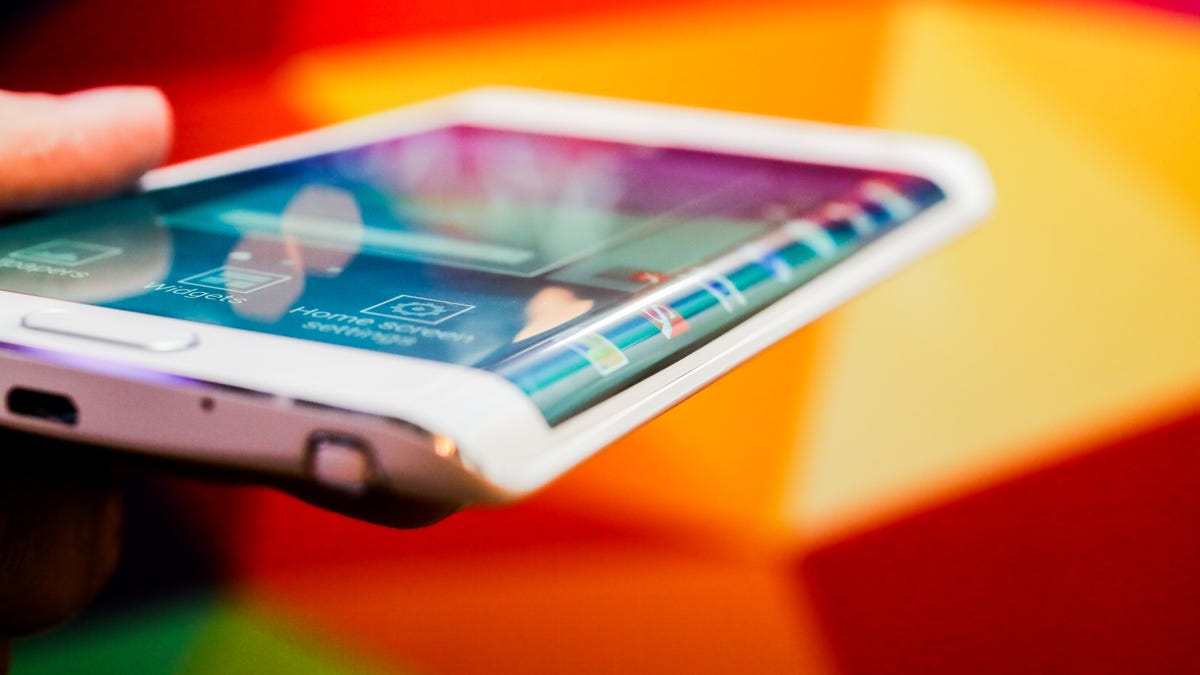
Sarah Tew/CNET
When Samsung wants to wow, it goes back to hardware.
The Korean electronics giant on Wednesday unveiled the Galaxy Note 4 phablet, the latest model of its phone-tablet hybrid with a 5.7-inch screen and stylus. It also showed off its new Gear S and Gear Circle wearables, which were announced last week, and demonstrated its Gear VR virtual reality headset, built in partnership with Facebook’s Oculus unit.
But it’s a new variant of the Note line, called the Galaxy Note Edge, that really offers something different for mainstream smartphone users. The phablet features a 5.6-inch display that curves around the side of the device — giving a sort of infinity pool effect. Users can see quick notifications, such as sports scores or trending items on Twitter, or click on app shortcuts, even while watching a movie on the main screen. In a world where all smartphones have started to look the same, the Galaxy Note Edge stands out.
See also
- CNET’s take on the Galaxy Note 4
- Wacky, shapely Galaxy Note Edge sports curved, fallaway screen
- Samsung’s Milk Music spills over to Web TV, wearables
- Why Galaxy Note 4 is a must-win for Samsung. Hint: Big-screen iPhone
- Full coverage: IFA 2014
“We take risks,” Justin Denison, vice president of product and strategy for Samsung Telecommunications America, said in an interview with CNET. “We think the market will love it.”
It’s vital for Samsung to release a smartphone that gets the buzz going again. The company is the biggest handset vendor in the world, but it’s facing tougher competition both in cheap phones and in pricey devices. Makers of low-cost smartphones such as Xiaomi and Huawei are pressuring sales in the low end, and Apple’s high-end iPhone 5S continues to sell well despite being nearly a year old. Apple plans next week to introduce larger iPhones, which analysts say could pose an even bigger threat to Samsung’s business.
When Samsung needs to churn out a hit, it turns to what it’s always done best — hardware. Samsung has long been at the forefront of the mobile market when it comes to the technology crammed into the devices. Its phones tend to use the fastest processors and brightest screens, as well as incorporate novel, high-tech features like curved displays.
Because Samsung builds components such as displays and chips in-house, it’s able to create new items from scratch for its upcoming devices. For the $200 Gear Fit wearable, released in April, engineers created a curved battery and curved display so the fitness band could form to the wrist. Few companies besides Samsung could do that — or introduce a phone with a wraparound display — without the help of a specialized component supplier.
Samsung Galaxy Note Edge rocks a curved sidebar screen (hands-on pictures)


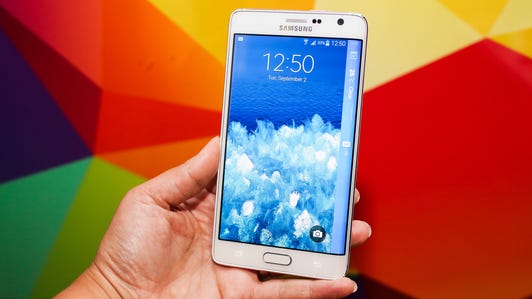

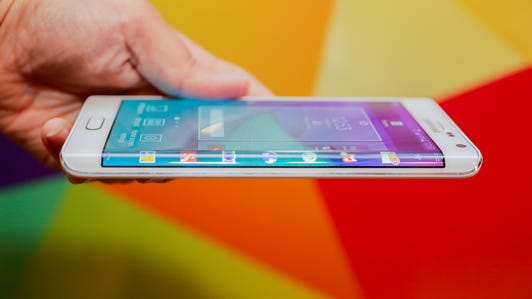

While Samsung often has the newest components in its devices, it also has faced criticism for the materials encasing the gadgets. Samsung’s popular Galaxy S devices use plastic instead of metal like phones from Apple, HTC, and other rivals. And it has tended to use the same basic design for its many devices, which market watchers have criticized. CNET’s Jessica Dolcourt in her review of the Galaxy S5 earlier this year described it a “superior superphone that hits every mark but the sharpest design.”
Many analysts have called for Samsung to refresh its mobile device designs, and the company has shown signs that it’s listening. It recently replaced its mobile design chief, and in August unveiled a smartphone, called the Galaxy Alpha, that has metal accents. The Galaxy Note 4 and the Note Edge also feature metal frames. It also has put more emphasis on devices designed by a group in San Francisco. The team has created the Gear Fit, as well as the Level audio line, the Gear S smartwatch, and the Gear Circle wireless headphones that resemble necklaces.
The Galaxy Note Edge is one of the first major smartphone design risks Samsung has taken that it’s releasing globally. Typically, it introduces new features — such as a curved display in the Gear Round or metal frames in the Galaxy Alpha — in only a limited number of test markets, such as its home country of South Korea. Many of its more innovative devices have never reached the US. But the Note Edge is slated to hit the US in the waning months of 2014 at Verizon, AT&T, Sprint, and T-Mobile.
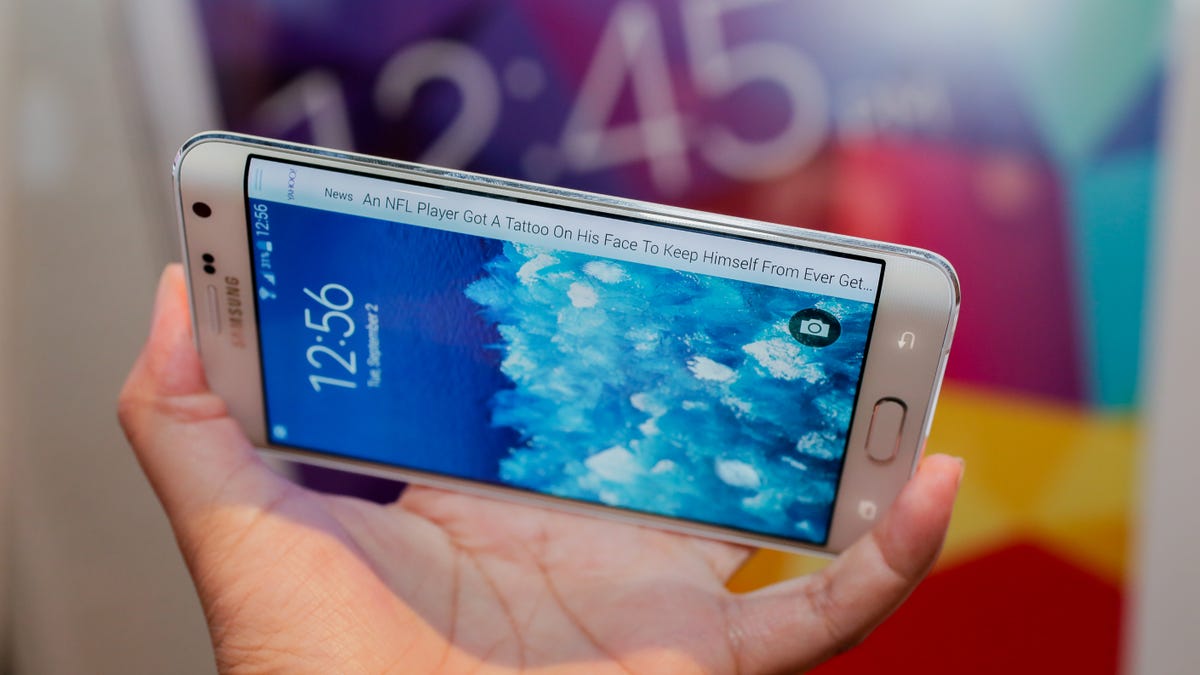

Sarah Tew/CNET
Now Samsung needs to get developers to create notifications and other uses for the side screen in the Note Edge. The company will launch a software development kit for the panel, and it likely will talk up the feature at its developer conference in November.
“Samsung will have to do a better job of engaging developers to fully utilize this unique hardware design for it to have real value to the consumer,” Gartner analyst Hugues De La Vergne said. “Only with developers customizing leading apps/games to utilize this feature, can this be a differentiating feature for Samsung.”
The Note Edge’s biggest issue, though, may be pricing. The Galaxy Note line of devices already commands a higher price than most other smartphones on the market, but the Galaxy Note Edge is sure to cost even more. Samsung’s not revealing pricing just yet, but Denison did say the device would be a premium product relative to the Note 4. Last year’s Galaxy Note 3 retailed for $300 with a two-year contract. Both the iPhone 5S and the Galaxy S5 start at $200 (though many deals can be found, bringing down the cost even more).
Whether the wraparound notification screen turns out to be really useful for consumers or just a gimmick remains to be seen. Many of Samsung’s gee-whiz software features in the past — eye scrolling, a translation tool, and a Group Play app that lets users share photos and other items with friends in close range — haven’t worked as well as promised. And the company has pared back many of its home-built applications and services in favor of those from partners such as Google.
Samsung said it has the long run in mind regarding the Note Edge.
“We’re not a company that does one-offs,” Denison said. “We like to do things big and get behind it.”
While Samsung can’t rely entirely on hardware to attract buyers, offering an eye-catching, obviously different smartphone is one way to get them into stores.
CNET News’ Roger Cheng contributed to this report.
Updated at 3:45 p.m. PT with analyst comment.
Samsung Galaxy Note 4 up close (hands-on pictures)
